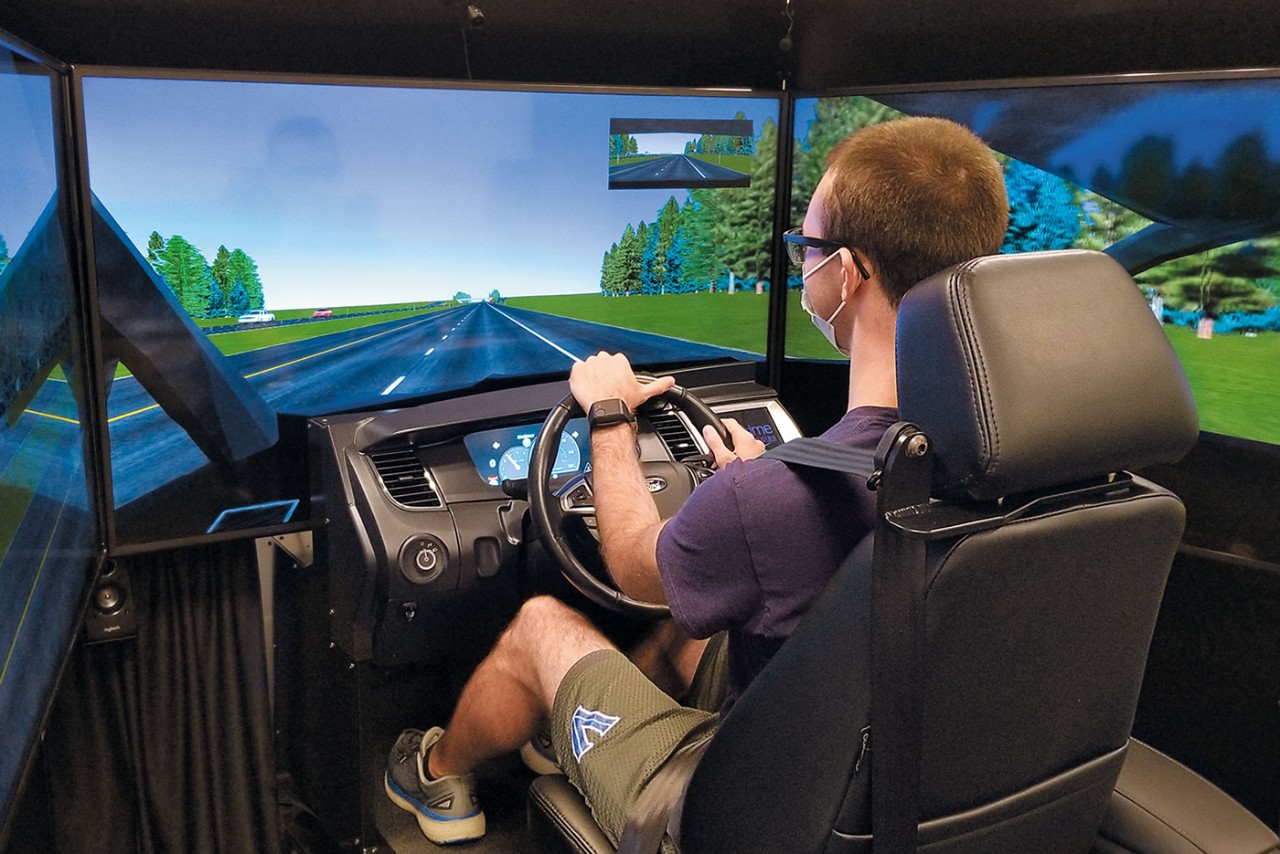On the Road to Safety
Innovative Engineering research examines what’s happening in the brain and how it affects driving behavior behind the wheel

Americans are on the road in record numbers. The AAA Foundation’s American Driving Survey shows that, on average, US drivers spend nearly an hour per day in the car—and, unfortunately, their focus isn’t always on the road.
Distracted driving causes about 920,000 accidents and 3,000 deaths per year, according to the National Highway Transportation and Safety Administration.
Two researchers in Villanova’s College of Engineering have been working together to explore how and what’s going on inside the driver’s brain affects their own driving behavior.
“The origin of every behavior is in the brain,” says Meltem Izzetoglu, PhD, assistant professor of Electrical and Computer Engineering. “So is there something that happens first cognitively that you can monitor and use that is connected to the behavioral outcomes?”
That question has been the driving force behind a productive collaboration between Dr. Izzetoglu, a pioneer in the analysis of brain signals and systems, and Seri Park, PhD, PTP, an expert in transportation engineering and associate professor of Civil and Environmental Engineering.
It began in summer 2020 when they co-advised a student-led team in developing a new driving simulator platform that could provide realistic driving scenarios for a fraction of the cost of current high-end models.
Distracted driving causes about 920,000 accidents and 3,000 deaths per year in the US.
Now they’re partnering with researchers at the University of Texas, Arlington, on a two-part study examining driver behavior in young drivers and older adults. Dr. Park serves as principal investigator for phase 1 of the study, which launched in October 2021 and is funded by the National Motorists Association and the National Academy of Medicine.
Among the questions the research teams are looking to answer is how much of an effect distracted and/or drowsy driving has on cognition levels and performance among these two distinct groups of drivers.
To assess the participants’ levels of concentration or distraction, they will outfit a state-of-the-art driving simulator (RDS-1000) with eye-tracking devices and with wireless wearable sensors created by Dr. Izzetoglu.
“The integration of the driving simulation software with tracking and imaging technology will help us learn more about the driver’s behavior, especially how and where their mindset is focused through the analysis of brain activity,” Dr. Park says.
NEXT IN NOVA-WORTHY
Villanova’s first resident female Nursing students lived in some unexpected off-campus housing: a convent